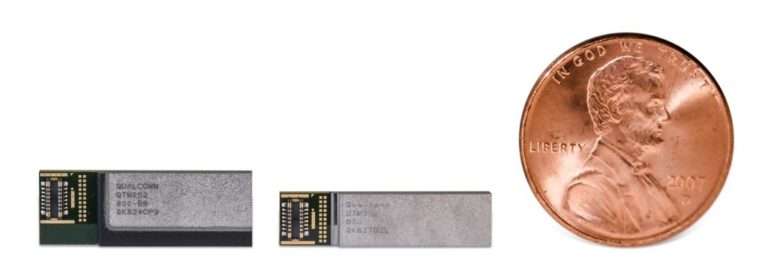The first 5G antennas will be ready to appear in smartphones from 2019. Just before the launch, Qualcomm was able to implement a 25% reduction. These are specifically the mmWave antennas, which are quite large for smartphones.
Qualcomm announced the first mmWave antennas in July. The antennas were quite large for smartphones and also required multiple antennas for optimal range. The mmWave antenna can be used in 26.5-29.5 GHz, 27.5-28.35 GHz, or 37-40 GHz bands. The sub-6 GHz module runs on 3.3-4.2 GHz, 3.3-3.8 GHz or 4.4-5.0 GHz. The latter module uses similar radio frequencies compared to today’s smartphones.
The Qualcomm QTM052 mmWave antenna module can achieve high speeds in densely populated indoor environments. The module supports up to 800 MHz of bandwidth thanks to advanced beam forming, beam steering and beam tracking technology. The module works with a Snapdragon X50 modem as a complete system.

2019 deadline
Remarkable: you can combine up to four QTM052 modules in one smartphone to improve signal strength. This allows manufacturers to optimally equip their first 5G phones for the best performance.
Today, Qualcomm, in cooperation with its partners, has been able to reduce the size of the mmWave antennas by 25 percent. That’s just before the deadline it set itself at the beginning of 2019. The first antennas are already being distributed for testing, along with the Snapdragon X50 modem.
This news article was automatically translated from Dutch to give Techzine.eu a head start. All news articles after September 1, 2019 are written in native English and NOT translated. All our background stories are written in native English as well. For more information read our launch article.